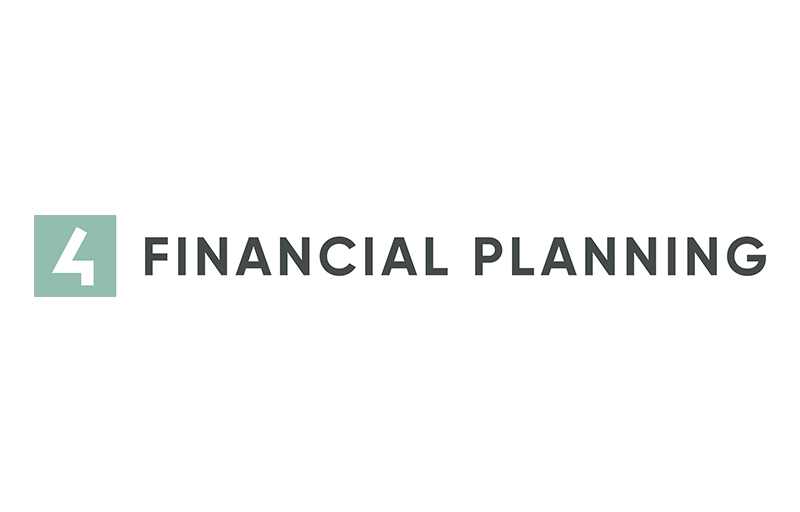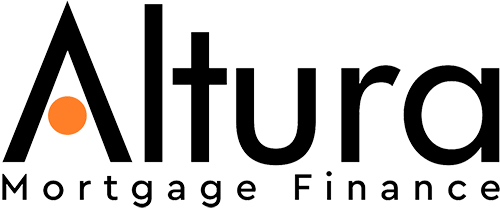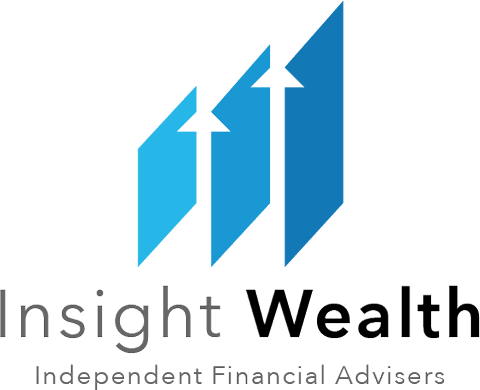
12th July, 2023 - Podcast
In Conversation With… Navigating the Complexities of Fees and Value (Money Marketing)
Intro / Outro 0:05
Hello, I’m Kimberley Dondo, Digital Content Manager, and welcome to in conversation with; the podcast series that delves into the world of financial services, and brings you face-to-face with some of the most notable figures in the industry. Listen as we discuss topics that are currently facing the industry, and hear from visionary CEOs to disruptive innovators, as we bring you a diverse array of voices and perspectives. We’ll explore the challenges they’ve faced, the lessons they’ve learned, and the insights they have to share about the ever-evolving landscape of financial services. Join us at Money Marketing interactive London on the 17th of October. Just go to the Money Marketing website to secure your seat at our industry leading event and hear from notable figures in the industry. See you there.
Kimberley Dondo 0:54
Hello, and welcome to the Money Marketing podcast. I’m Kimberley Dondo, and in this week’s podcast, I’m joined by Phil Bray, who is Founder and Director of The Yardstick Agency, and Ian Else, Founder and Financial Planner at 4 Financial Planning. Thank you both for joining me today.
Ian Else 1:20
My pleasure.
Phil Bray 1:21
Thank you for having us.
Kimberley Dondo 1:21
Okay, great. So, I just thought we could start off by getting more of a background into both of you. So Phil, if you want to start us off by telling us a bit more about yourself.
Phil Bray 1:32
Yeah, sure. So, donkey’s years ago, I used to be a Financial Adviser. So I started 1995 and advised until about 2010. And then I was Head of Marketing for a financial advice business that’s now run by my wife; became head of marketing at Sense Network, and left them 2016 to early 2017, to set up The Yardstick Agency.
Kimberley Dondo 2:03
Great, and what about you, Ian?
Ian Else 2:07
So I was a late entrant to financial services. I sailed professionally for a number of years, I gave up sailing in 2007. My wife was working for Standard Life as a broker/consultant and she said “Why don’t you get into financial services?” I got into financial services working from Sanlam as a broker/consultant for them, and then 2012, I switched to poacher, became a gamekeeper, and became an IFA, and then just before lockdown, January 2020, I started my own business.
Kimberley Dondo 2:42
Okay, fantastic. So I think both of you have quite an interesting path into financial services. Although, everyone I speak to seems to have an interesting path; it’s never just, you know, I went to school, I decided to do this and now I’m here. It’s always a very interesting path. So, for this particular podcast, we’re going to be talking about fixed fees. So, before we start, I don’t know whether Ian or Phil, could you give me a quick rundown in terms of the various payment structures that are currently out there in the market for advisers?
Ian Else 3:22
This is probably one for Phil, I would have thought, he’s probably got a better understanding of what everybody else is doing than I have.
Phil Bray 3:28
Yeah, that’s, that’s absolutely fine. I think for me, there’s probably three, and Ian, just tell me if you think I’m talking rubbish. But for me, I think there’s three points at which advisers and planners potentially, or do charge their clients a fee for a service being delivered. You have the financial planning community or the lifestyle financial planning community, who would generally charge for the production and preparation of a plan. Second stage would be in my experience, the implementation of that plan, and the third stage would be an ongoing service to ensure that the plan is kept on track to achieve the client’s short, medium and long term objectives. So for me, I see the charging at those three different points. Some advisers, some planners, (our clients) will charge a fixed fee for each of those stages; others will charge a percentage, I don’t think I know of any firms that charge a percentage for the production of the plan, so I think that’s almost always on a fixed fee; and then implementation and ongoing is either on a fixed fee, or a percentage of assets. So that’s the way I would see it right now. Ian?
Ian Else 5:06
Yeah, absolutely. I don’t think I disagree with anything about that at all.
Kimberley Dondo 5:10
Yeah. I guess from your perceptions, how have you observed the perception of fixed fees among clients and within the industry as well?
Ian Else 5:23
I guess I’ll jump in on the client thing, I think. I’ve never come across a client yet, either prospects or that’s on board that doesn’t prefer a fixed fee, and understanding exactly what they’re paying on an annual basis, rather than a percentage that to a certain extent, needs to be worked out or published by the adviser each year, and that percentage kind of varies year on year. But I do accept that I’m going to be heavily biased towards fixed fees too. But you know, I get a lot of clients that come to me from other financial advisers, where they’re paying ad valorem charges. And they come to me specifically, because they prefer the idea of knowing exactly what they’re going to be paying year on year.
Kimberley Dondo 6:12
Hmm, and from your perception, Phil, what would you say are the best strategies or tactics that financial advisers can employ to effectively communicate their value proposition and also justify their fees to potential clients?
Phil Bray 6:32
Well that’s…
Kimberley Dondo 6:34
Is that a big question? sorry.
Phil Bray 6:36
It is a huge question. I think the best way would be to invest in a time machine, travel forward a few years, and let the prospect, the potential client who sat in front of the planner right now see that value.
Kimberley Dondo 6:54
Yeah, yeah, that’s true.
Phil Bray 6:57
Since Elon Musk hasn’t yet invented a time machine that,
Kimberley Dondo 7:00
Could we trust Elon to do that though?
Phil Bray 7:03
So for me, and again, Ian might have a different perspective. But for me here, the way to do this, the way to demonstrate value is, there’s two ways of doing it, you can tell somebody about the value they’re gonna get, or you can show them what value they’re going to get. And for me showing is so much more powerful than telling.
Kimberley Dondo 7:30
Yes.
Phil Bray 7:31
And therefore for me, advisers/planners should have a portfolio of social proof. Social proof being the thoughts and words of others to demonstrate the value that they add. And one of the best ways of doing that is client videos. So videos of Ian’s clients explaining to future clients of Ian, the the value of working with Ian. I think online ratings and reviews have got a part to play as well. But video, seeing someone like me if I’m thinking of being a client of Ian’s; I’m 65, I’m thinking about retiring, I’ve got a box of stuff, I’m feeling anxious, not particularly confident about the future, I don’t know whether I can afford to retire; seeing one of Ian’s clients talking on video about how they were like that, and X number of months or years later, do not feel like that anymore, that is just so powerful. So. for me, showing beats telling, and the best way to show is with client videos.
Kimberley Dondo 8:44
Yeah, I think for me personally, testimonials do work very well, when it comes to looking at what services any business can provide, and yeah, I think that would probably be very powerful. So Ian, I’ve seen a lot of talk mostly on I have to say Twitter about financial advisers finding it difficult or challenging when they’re talking about their fixed fees. So why do you think there is that challenge for advisers to kind of express their fixed fees?
Ian Else 9:23
So I’m going to give two opinions here, and one of them is going to be slightly controversial, but fortunately for me, I don’t need to necessarily have IFAs as my best friends. The first opinion is, it’s been a transition for financial advisers, and I’m obviously talking before my time, but back in 2005, 2006, an awful lot of people thought that financial advice was free. There were bonds that you were selling with enhanced allocation, so you would get more money that goes into your investment than you actually give them, and the advisers would still be able to take a chunk of money. So, you’ve got advisers that have evolved from initially many years ago, almost pretending what they were doing was free, all the value came from the providers, they were never having to pay directly for it. So then we had the kind of change with RDR, and it had to change then, and it became a situation where they were having to explicitly charge the clients for it, there was no more enhanced commission or anything like that. So that was one big leap for them from almost, you know, inferring financial advice was free to being very explicit about it, but still talking about percentages to most people. You know, if you talk to Neil Beige, he will tell you that the vast majority of the population aren’t particularly numerate, so they can’t translate percentages quickly into actual monetary values. So they’ve gone from that to talking about percentages to talking about 3%, and 1%, and things like that and now they’ve got the other task of then turning those percentages in to physical numbers and it’s more difficult if you’re not used to it. And I’ve never found it difficult, but then I’ve never lived in a world of really telling people that they either weren’t paying very much for financial advice, or it was a percentage. The slightly more controversial opinion, that Phil kind of knows, I think, is that, when Phil spoke about how to charge for things, and how to demonstrate value, I think the most important thing you can do is make sure you do add value. Because we we live in a wonderful Twitter bubble of what I consider some very, very good financial planners, and I have no qualms that the people I mix with in that bubble do offer value, I still think there’s a whole pool of advisers out there that perhaps don’t offer fantastic value for money. And if you’re not offering fantastic value for money, it becomes much more difficult to articulate it and talk about these fees. Because clients will say “What am I getting for that?” And unless you’re really confident about what you’re giving them for that, it becomes difficult to articulate it.
Kimberley Dondo 12:09
Yeah. And I can imagine that something that some of those advisers are probably thinking about a lot more with consumer duty looming by the end of this month. So, hopefully those who aren’t adding value will be able to better explain it or figure out how to add that value. So Phil, how can advisers highlight their unique selling points and kind of differentiate themselves from other competitors when they’re discussing their fees with clients?
Ian Else 12:43
You’re getting all the big questions Phil.
Kimberley Dondo 12:50
I’ll toss it back to you, Ian, how you do it yourself as well, but let’s start off with Phil.
Phil Bray 12:55
So think this is my controversial moment now.
Kimberley Dondo 12:58
Yeah.
Phil Bray 12:58
I don’t believe there are any USPs in financial planning.
Kimberley Dondo 13:03
Okay.
Phil Bray 13:05
And that’s a view held lightly. If someone can show me a USP, then that’s fine. But generally speaking, there is always a another firm that does something that is broadly similar. And I would say, to go down a rabbit hole for a second, I would say that the search for a USP is actually a bit of a distraction and largely pointless because there is such an advice gap. There is so much benefit from working with a Financial Planner and financial planning at its best can be truly life-changing, I don’t think you need a USP. Having said that, I do think firms need to be aware of their differentiators and be able to communicate those differentiators. And one of those differentiators is of course charging a fixed fee. I think most financial planners charge a fixed fee for the plan, therefore that’s not that much of a differentiator, although financial planning is a differentiator from product lead advice. The fixed fee for implementation and the fixed fee for ongoing is certainly a big differentiator. I don’t know what proportion of planners charge a fixed fee ongoing, but gut-feel it’s a relatively small proportion. I think the cohort of advisers and planners that charge a percentage base and the cohort that charge a fixed fee, one is significantly larger than the other; and it’s probably worth pointing out here that actually I’m pretty agnostic on this, I can see the benefits of both and I’m certainly not here sat here as a owner of a marketing agency telling advisers that they have to do it this way, or they have to do it that way, I can see the benefits of both. But if you do charge fixed fees as a marketer, and someone who wants to promote a good planner’s business, that is absolutely a differentiator that you are going to latch on to, and really use to talk to prospective potential clients about the benefits of working with that planner.
Kimberley Dondo 15:31
Yeah, and Ian, what are your thoughts on that as well?
Ian Else 15:35
Well firstly I completely agree with Phil about USPs. I use that analogy, and the words I use that kind of alludes to that is “What separates me from the crowd?” Because I agree with Phil completely, I know, advisers that are doing everything that I’m doing, and I think it’s incredibly difficult. The word unique means it’s just you doing it, I think it’s incredibly difficult to have a unique selling point. So it’s just about what makes you makes you good and makes you valuable. For me, I find the fixed fees are an easier, or an easy sell. I’ve said this to Phil lots of times, the one thing that I never ever get is pushback on fees; because my fees are on my website. I think probably at least you know, 99% of people will have looked on my website, either before they’ve contacted me, after they’ve contacted me. They’re all published on the website, so every single prospective client I have come in to sit in front of me has some understanding of what the lower and upper limits are going to be and what they’re going to pay for the plan, the implementation and then ongoing. So when I come to the end of that meeting, and say, “Look, this is what I think we need to do for you, and these are the costs that are involved in that.” Never once have I had somebody, pull a breath or suck their cheeks in, by being surprised. So I love it and I love being transparent on the website, because it is a filtering process. But again, I appreciate you know, as far as I’m concerned, I like fixed fees, I think everybody should be doing fixed fees, but as long as you’re offering value for money, I don’t really care what you do.
Kimberley Dondo 17:17
Yeah, yeah. In an industry where transparency is becoming more and more important, what would you say are some of the best practices financial advisers can utilise to clearly and transparently communicate their fee structure to clients?
Phil Bray 17:41
Do you want to start this one Ian?
Ian Else 17:43
Yeah okay. I think it’s really, really tricky, because I know, a lot of very good fixed fee advisers that charge a lot more than me, but, they are dealing with clients with a lot more money and a lot more sophisticated and complex needs. I think that there is a danger of if they are completely transparent as I am, for some of their minimum fees, some people might look and be put off by those who could really benefit from financial advice, because they haven’t had the chance to discuss the value of it and it might just put them off seeking financial advice at all. But I think provided, you are very clear, so when you meet with somebody provided at the end of that meeting, you are very clear about what you can offer, how that can add value, and how much it’s going to cost the client. I’m very happy with that. I’m not militant about publishing, on websites, it works for me, but I realise if some people see fixed fees, at sort of £6000 – £12,000 they might think that’s ridiculous I’m not paying that, when they could get double, triple quadruple their money back by working with a Financial Adviser.
Kimberley Dondo 18:59
Yeah, and Phil, what is your perspective?
Phil Bray 19:03
I think I have a slightly different perspective to what Ian said earlier. So Ian you set up a brilliant business, I don’t know how long ago it was now, maybe three years ago, putting yourself out there as a fixed fee Financial Planner. So a couple of differentiators there, financial planning and a fixed fee. I know of other planners who have followed in your wake. Yeah, they are that following the likes of you who have trod on that path, and they are struggling with the explanation, the justification, maybe that’s not quite the right word, but the explanation of fixed fees to their clients and are getting pushback from clients. I think it’s partly because clients are seeing that pounds, shillings and pence, exact amount that they will pay as opposed to a percentage. And that goes back to what you said Ian earlier, I think what you said about Neil. But I do sit here, some fixed fee financial planners early on in their journey are thinking, is this worth it? Should I go back to what I knew and could explain, and clients were accepting? Or should I continue down this road hacking as I go, trying to deal with the barriers that are put in front of me? So it’s those sorts of people that I think look up to the likes of you Ian.
Kimberley Dondo 20:47
So Ian as Phil said earlier, having set up your business, you know, three years ago, have you encountered any regulatory or compliance hurdles related to implementing the fixed fees? Is it more trying less trying?
Ian Else 21:08
I think as far as consumer duty goes, which is obviously the big thing at the moment, if I was ever going to wish some extra regulation on financial advisers, consumer duty has fallen straight into somebody with my fee structure’s lap. I’ve all already charged on basically the complexity of the advice. So there’s three tiers now, you either low, medium, or high complexity. So that’s exactly what consumer duty is looking for, none of my clients are paying significant ongoing fees that they might be with other people, so, it isn’t hard for me to show the value for those people. I turn a lot of clients away, I’m very happy to send them to Vanguard or something like that, or do some transactional work and not take them on as an ongoing client. So for me, whilst I wouldn’t say consumer duty (has been welcomed), or maybe it has been welcomed, we’ll see what happens to it. But for me, consumer duty has not been a headache one bit because as I develop the business with Phil’s help, and the rest of the team at Yardstick, we work very hard on showing what it is I offer, what you’ll get for it, what puts you in a different fee category from, you know, Joe Blogs down the road; so it’s been quite simple for me to demonstrate that. I can’t, you know, I look at what’s coming out, and if I was charging, you know, 1% on an accumulation client with £1.5 millon, and there are plenty of advisers out there that do and will be, I wonder how I would be demonstrating 15,000 pounds a year worth of value from it.
Kimberley Dondo 22:59
Phil, on your end, are there any considerations that have to be taken when you are marketing your fees as an adviser?
Phil Bray 23:11
Yeah, absolutely 100% I think, there is. Let’s just talk about adviser websites and fees on there. I agree with Ian, I do not believe the regulators should mandate online fee disclosure. I think it should be up to the individual firms to make their own decision on what’s right for them. I know it’s not trendy these days to sit on the fence and give a non-binary answer. But there are absolutely pros and cons to online fee disclosure; and they need to do what’s right for their potential clients, their existing clients and their business, but if you’re going to disclose your fees online, you need to do it effectively. That’s because your website’s your shop window, as Ian said earlier, 99% of people who approach Ian will look at the website beforehand, they’ll look at the homepage and might look at the meet the team page and they’ll probably go and look at the fees page. The fees page is going to be a really popular page. That means we’ve got to show two sides of the same coin, that value coin. We’ve got to show what the fees are and we’ve got to show what someone gets in return and it isn’t just talking about the features that they get, e.g. a 12 monthly meeting feature, confidence in the future, reassurance, peace of mind, that’s the benefit of the meeting, the feature. So, we need to talk about features and benefits and we also need to show points of differentiation. So again, showing that fixed fee is differentiating from percentage charging, I would also potentially be showing some worked examples, maybe some examples, and comparing what the firm charged with what their peers charged and competitors charge, to put it into a bit of context, and then, of course, scattering social proof throughout the page, so that the potential client looking at it, again, can be shown the benefits. So for me that the fees page is all important, it’s got to explain what’s charged and when, the features, the benefits, some worked examples, some comparisons, and then some social proof, and a well designed page, you can get all that in there quite easily.
Kimberley Dondo 25:42
And kind of building off of that, In both of your kind of expertise and knowledge, what are some of the specific channels, marketing channels, or platforms that financial advisers can utilise to showcase their expertise and value? Is it LinkedIn, Twitter, like, where can they you know, get in front of those clients?
Phil Bray 26:09
What’s been working for you Ian at the moment?
Ian Else 26:12
Well I think, by far and away, and I know full well, Phil’s gonna agree with me on this, that your existing clients are the best place for new clients.
Kimberley Dondo 26:21
Yeah, word of mouth.
Ian Else 26:22
Word of mouth by a country mile. As I’ve said to Phil in the past, though, when you’re starting, if you are starting afresh, and you’re starting with 10, or 12, or 15 clients, you don’t have the pool to fish from to get enough referrals. I’m up to a number now that really, my referrals are enough to meet my aspirations and my goals, but it takes a bit of time to get there and in the early stages, Phil and I had this conversation. I think it’s just important, if you listen to people like Seth Godin, you just need to (be authentic), I think more than the channels, being authentic, is the most important thing you can possibly do on social media. And don’t just talk about what you do for a living, be a decent human, somebody that comes across as honest and people will refer you. I think probably five or 10% of my current clients have come from other financial advisers, mainly London financial advisers, a couple in particular, who have a client turn up with £200,000 or £300,000, their ongoing, and their fees don’t represent value for money, but they are very happy to refer them to me. That’s a big thing for me, I had a Money Marketing journalist refer her sister to me who’s a client, you know, things like that mean the absolute world to me, because it’s my peers that say, you know, what we trust you Ian, we like what you do and I think you can help some of these people.
Kimberley Dondo 27:57
That’s great. And Phil as a marketer now, what would you say?
Phil Bray 28:04
I would completely agree the first port of call, the first cab off the rank, the first tactic you should be using to generate new enquiries is getting intentional and more strategic about the recommendations and introductions you get from your existing clients. Recommendations, introductions, referrals, whatever you want to call them, they’re all the same thing, are the best type of new enquiry, They’ve got the highest conversion rate and the lowest cost of acquisition, So why start with any other marketing tactic? We get advisers come in to say “I want to be on the first page of Google, I want to improve my SEO.” Right, why do you want to do that? Because it’s going to create leads that convert at a lower rate. Why do you want to do that, rather than prioritising referrals, recommendations, introductions. So until you have maxed out that potential, then don’t look at any other marketing tactics. If when you have maxed out that potential, you still have a gap between the number of enquiries you need and the number of enquiries you could get, then start to look at other marketing tactics. But start, always start with trying to get more intentional, more strategic about referrals and recommendations from existing clients.
Kimberley Dondo 29:27
Right, and finally, what would your advice be to any advisers who are transitioning to a fixed fee model? Ian?
Ian Else 29:43
I think it would to start with, be incredibly clear about your value proposition. I think when you are pitching your fees to somebody, I think clients and everybody has a sixth sense to somebody being honest and straight with them and I if you really believe in your value proposition that it adds value, it becomes much, much easier to sell. And I know that if somebody comes to me with £300,000, they’re looking to go into drawdown, you know, and I want to work with them, I know I can add value, and I find it very easy to articulate how I can add value, because I believe in that proposition. So my first thing would be, charge what you need to charge to make it profitable, but also make that amount of money at a level that you really feel that, once you’ve done your segmentation of what your ideal client is, and how much money they’ve got and what stage of life they are at, which Phil can talk to you more about, make sure that you say, obviously I don’t work for free, let me talk to you about the costs that are involved; which is what I say at the end of each meeting and I talk them through the costs, what they get, and just make sure you really believe in it, and it becomes so much easier to sell, if you really believe in it, and you believe that you can add value.
Kimberley Dondo 31:01
Right. And Phil, is there anything you’d like to add to that?
Phil Bray 31:04
Yeah, there’s two things I’d add to that.
Kimberley Dondo 31:06
Yeah.
Phil Bray 31:07
The first is keep the faith. I don’t know if Ian would agree, but I suspect there is a point where most financial planners who are building a business, and charging fixed fees, which is kind of going against what the majority of their peers are doing, feel like giving up and just going back to what they feel comfortable with. So I think the first thing I’d say is keep the faith. Second thing I would do is talk to your peers have two or three peers who can act as your mentors, informal mentors, probably. People who you can pick the phone up to, when you are having that crisis of faith in what you’re trying to do. They can just bring you back on and correct your course and just give you the motivation to carry on. We’re in a very giving profession; I know there’s the odd Twitter spat and the odd people falling out, but we absolutely are in a very giving very sharing profession. I’m quite sure that there are a bunch of fixed fee planners out there who would be very happy to share their knowledge with people who are earlier on on that road.
Kimberley Dondo 32:38
Yeah
Ian Else 32:38
There might even be a WhatsApp group for that.
Kimberley Dondo 32:42
Oh, wow. I think you probably get the gems from the WhatsApp group. I’m in some WhatsApp groups, not financial adviser WhatsApp groups, I wish I was, I would probably get loads of gems. But yeah, WhatsApp is really great. So yeah, that’s fantastic. Thank you so much for joining me today guys, I personally learned a lot and I hope our audience also picked up a lot as well.
Phil Bray 33:07
Thank you, Kimberly.
Intro / Outro 33:08
Thank you for listening to in conversation with, we do hope that you enjoyed it. Please do keep up to date with all our new releases via pod bean, Apple podcast, Spotify, and everywhere else you get your podcasts from. You can also keep up to date with all our new content published on the Money Marketing website, as well as our print edition Money Marketing magazine, so make sure to subscribe. Follow us on Twitter, LinkedIn, Facebook and Instagram. See you next time.
Hear from our clients
Working with some great businesses.
Founder & Financial Planner, 4 Financial Planning
"The brand, logo and website has hit the brief perfectly and I couldn’t be happier! I wouldn’t hesitate to recommend them.”
Read More
Managing Director, NextWealth
"They were a delight to work with – super responsive to our requests and also brought lots of good ideas to the table."
Read More
Managing Director, Altura Mortgage Finance
"Best of all, their results driven approach is both refreshing and helping us achieve real goals. Thank you Yardstick!”
Read More
Director and Financial Planner, Annetts & Orchard
"I’m a big Yardstick fan now and look forward to working with them on future projects."
Read More
Managing Director, Handford Aitkenhead & Walker
"We have felt like collaborators, rather than customers, and feel like Phil and his team has a vested interest in our marketing success that far exceeds his fee.”
Read More
Financial Planner, IQ Financial
We were lucky to be referred to Yardstick last year. We are delighted we hired them. They have specialist knowledge designed specially to help Financial Planning businesses like ours.
Read More
Head of Marketing, Ellis Bates Financial Advisers
Phil's style is informed, humorous and collaborative. The content is punchy, relevant, a go-to guide on how to create more recommendations and prompts action with no exceptions. Great workshop.
Read More
Financial Planner and Founder, Delaunay Wealth
I am absolutely delighted with all the work the Yardstick team has done for us and am very excited about how this will drive our new business/client acquisition in future. I would highly recommend them to any financial planning firm that takes their business seriously.
Read More
Director and Financial Planner, Insight Wealth
Great to work with a good professional outfit that had provided us direction and clear thinking in marketing our business effectively to obtain quality new clients.
Read More
Director & Financial Planner, Citygate Financial Planning
A thorough and excellent service. Phil and his team know exactly what to do, how to do it and when to do it. We very much look forward to working together more in the future.
Read More
Get in touch
Request a callback
Whatever your marketing challenges, we're here to help. Simply complete this form and we'll be in touch.


